Photos: Prepping: SHTF: 10 Good Spots To Hide Your Food In A Crisis
(:E-:N-:R-AZ:C-30:V)
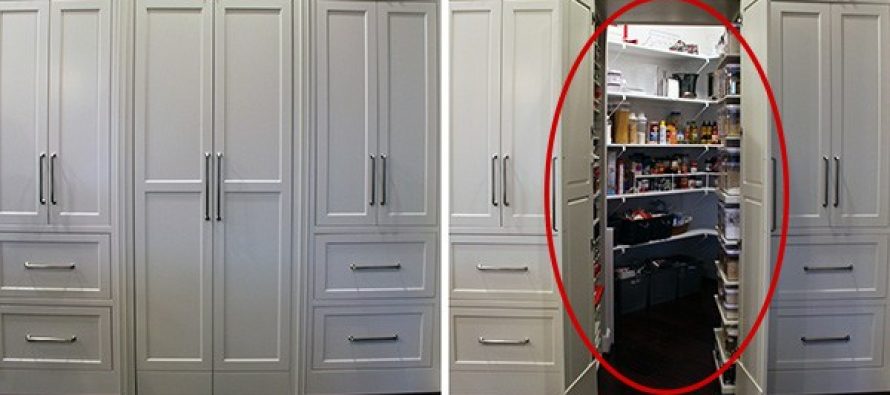
We all have our food storage for when SHTF. Some of us can live on our supply for years without outside interruption. What happens, though, when outside interruption threatens our supply? In a desperate scenario, hungry neighbors may try to force their way in to steal your food surplus.
As preppers, we are prepared for everything. Having a dedicated room in your basement or root cellar is great for storage, but it can have easy access to intruders. If a burglar finds all your food in one place, you will have to start building your surplus from the ground up, again. That is an expensive hassle if people have already resorted to stealing food in this scenario.
Instead of keeping all of your long-term non-perishables in one place, I personally like to spread out my food in different hiding places. As to not lose track of my stock, I keep a detailed list of my hiding places and what is kept there. It’s also helpful to have clearly marked expiration dates on the list as well. Keep this list easily accessible, yet locked, such as on your tablet or computer, or a physical list inside a safe.
Not to state the obvious, but please keep in mind obvious fire hazards when storing. Cardboard or wood boxes of food will not fare well next to electrical wires, etc. If your hiding spots are under floorboards or behind walls, they should be 100% critter-free. Just ensure you inspect your hiding places well before storing.
Here are some of my favorite inconspicuous hiding places for non-perishable food.
A Hidden Room
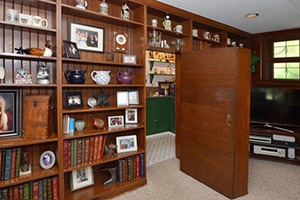 Like me, you may know your way around a home project. Home invaders will never be able to find a stash if the room is completely concealed, and most homes do not come with hidden rooms upon purchase (unless you’re lucky).
Like me, you may know your way around a home project. Home invaders will never be able to find a stash if the room is completely concealed, and most homes do not come with hidden rooms upon purchase (unless you’re lucky).
Tons of homes have “dead space” between walls, leaving a few feet here and there of unused square footage. These spaces can be dug out, reframed, and have shelves added. To conceal the room completely, a bookshelf or cabinet can hide the entrance to your new hidden food storage.
Emergency Shelter
If you live in a tornado area, you may already have an underground storm shelter. Food surplus can easily be stored in these areas. Since they are underground, the humidity levels should be optimal for keeping food.
Store it under benches or up on shelves. It is also a great idea to have sustenance during increasingly dangerous weather in your climate.
Under Stairwells
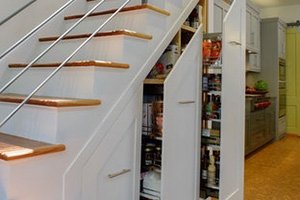 Often, there is a ton of unused space underneath the stairwell of your basement or first floor to second floor.
Often, there is a ton of unused space underneath the stairwell of your basement or first floor to second floor.
This is a great opportunity to store food, as this space is typically dry and temperature controlled. I like to store food at the very back wall of the stairwell, and store household furniture and other things to conceal the food behind it.
Survival Caches
All along your property, you can dig some proper storage caches in case SHTF. All cache containers withstand moisture, critters, elements, and temperature. The hardest part is remembering where you buried them!
Related: How To Make A Survival Cache And What To Put In It
Closets
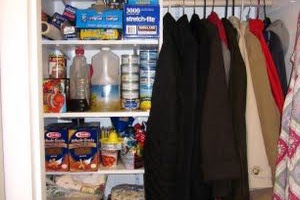 Sure, storing food in a closet may be obvious. But it’s the location inside the closet that you need to pay attention to.
Sure, storing food in a closet may be obvious. But it’s the location inside the closet that you need to pay attention to.
Boxes of non-perishables can be stored under hanging coats in your coat closet. The high shelves on top of most closets often go unused, making them the perfect place to store lighter items, such as lighter bags or vacuum-sealed foods.
Rental Storage Unit
You should never store all of your food in one place at home, just in case your home is destroyed or robbed. Having some food surplus in a storage unit is a great idea if your house is threatened.
You can find rentals that are temperature controlled and reputable. Some are even elevated in the off-chance the unit has a critter or two. The unit should also be well-shaded and facing away from direct sunlight.
Bug Out Location
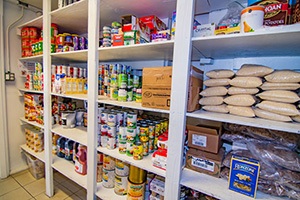 If you are fortunate enough to have a location that your family retreats to in a global emergency, be sure you have a rotation of non-perishables hidden in that location. This way, if family members must run, packing food is one less item on their mind.
If you are fortunate enough to have a location that your family retreats to in a global emergency, be sure you have a rotation of non-perishables hidden in that location. This way, if family members must run, packing food is one less item on their mind.
Sharing this space with trusted family members and friends is beneficial in case someone is in trouble. All members should agree to keep up with adding to the stock as they take.
Galvanized Steel Garbage Cans
These garbage cans store some items very well, such as dried beans or grains. They can be kept in a garage, basement, or barn and will keep temperature and moisture optimal. If you are a pet owner, this is also a great place to store excess pet food. Use brand new cans, with the food in mylar bags containing oxygen absorbers.
Related: How To Understand The Signals From Animals Just Before A Natural Disaster Strikes
In The Ground
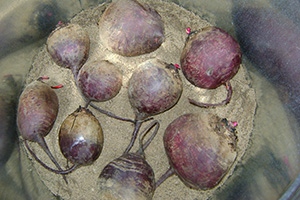 How do you store food in your own garden? During the winter months in cold weather regions, root vegetables can be stored right in the ground after harvest.
How do you store food in your own garden? During the winter months in cold weather regions, root vegetables can be stored right in the ground after harvest.
Vegetables that can be stored this way range from beets, to carrots, to potatoes. Check frequently to ensure the veggies are free from rot or critters.
Chamber
The guest bedroom/home office is a great place to hide food. Non-perishables can go inside a desk or be stacked inside the closet. Storage shelves can also hide extra food without being in plain sight.
Some Places You Should NEVER Store Food Are:
- The attic – hot temperatures fluctuate during the summer, spoiling all of your food.
- A crawl space – critters can easily penetrate these and crawl spaces typically get warm in the summer.
- The shed or barn – again, temperature and rodent control is too difficult here.
- Near chemicals or excess fuel. Just don’t do it.
We all have excess food storage to sustain ourselves in case of an emergency, but keeping some hidden food elsewhere will ensure you have enough in a crisis.
It is never fun to think about the what if’s, such as what if I’m robbed? What if my food supply is compromised? If that is the case, being prepared on all fronts will secure our safety.
4 Pics: Were Charles Manson & his Killer women out to murder Liberals???
Why did the 3 young women above take part in some vicious murders? It is completely and utterly unnatural for women to engage in cold blooded murder.
Video: People massive wastage, massive inefficiency: Why Africa Wasted $1.4 Trillion in Foreign Aid
Africa is the richest continent on Earth. In fact, it is richer in minerals than the whole world combined. Yet these useless People have received more food, medicines and AID than any other place on Earth. Their levels of wastage and failure are unbelievable.
Which Race is older? Liberals or People (Caucasians)? What Science says
Here‘s a quick answer to this question.

